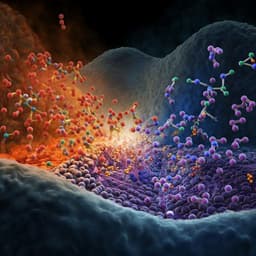
Medicine and Health
N-acetylaspartate promotes glycolytic-to-oxidative fiber-type switch and resistance to atrophic stimuli in myotubes
S. Castelli, E. Desideri, et al.
N-acetylaspartate (NAA) treatment in C2C12 myotubes significantly enhances lipid turnover, mitochondrial biogenesis, and oxidative metabolism, while improving resistance to atrophic stimuli. This groundbreaking research conducted by Serena Castelli, Enrico Desideri, and colleagues unveils the critical role of NAA in transforming muscle response in neurodegenerative diseases like amyotrophic lateral sclerosis (ALS).
~3 min • Beginner • English
Related Publications
Explore these studies to deepen your understanding of the subject.







